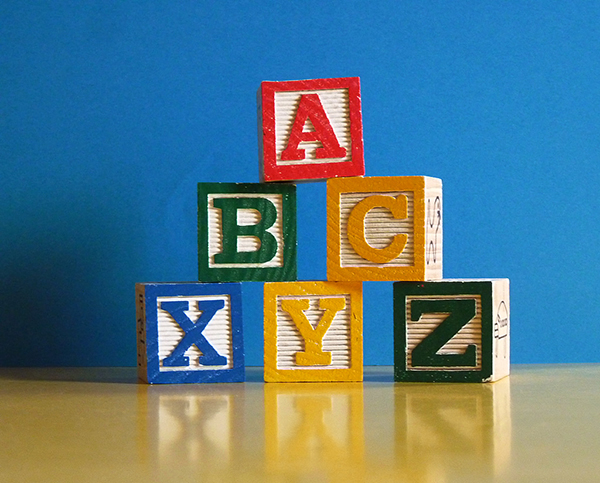Boston Harbor, A to Z

Image Credit: ABCs by Linda Rain 714
For Islands in Literature, this month we look closer to home with an ode to our own Harbor Islands by Melanie Novick, one of our staff from 2021.
Boston Harbor, A to Z
If you come to Boston Harbor, here’s what you might see
In alphabetical order, from A to Z.
A is for apple trees, planted on George’s
Which sustained soldiers there, so they didn’t have to forage.
B is for blackberries, with bristling brambles.
You can’t harvest them, but you can taste-test a sample.
C is for cat-tails, the tall, fibrous reeds
Whose brown tufts on top become fly-away seeds.
D is for Drumlin, or lopsided hill
Formed eons ago from glacial till.
E is for eagles, whose wingspan can reach seven feet
And hunt/ scavenge fish, birds, and mammals to eat.
F is for flowers, colorful and scented
That blossom and make the islands look splendid.
G is for goldfinch, who flutters and flies.
Its bright yellow hue makes it easy to spy.
H is for harbor seals, who swim as they please
And have layers of blubber to ensure they won’t freeze.
I is for island, we have 34
(Including peninsulas attached to the shore.)
J is for juniper, a coniferous tree.
Their cones are like berries you can steep to make tea.
K is for killdeer, a small, brown-winged bird,
Named when their loud chirp of “killdeer!” was heard.
L is for least terns, who winter in the Caribbean,
Only to fly all the way back to begin again.
M is for layers of shells, called middens,
Left by ancient peoples, for centuries hidden.
N is for nautical, for seafaring boats:
Ships, ferries, barges, and anything that floats.
O is for osprey. This bird of prey
Can spot underwater fish from forty meters away.
P is for piping plover, who have nests on the beach
That are vulnerable to trample ‘cause they’re easy to reach.
Q is for quahog, a common type of a clam,
One of many shells you might find in the sand.
R is for raccoons, those cute, clever pests.
Omnivorous and nocturnal, they dine while we rest.
S is for sumac, with compound leaves
And red fuzzy fruits that contain single seeds
T is for turkey, and you might find
Their large, striped feathers they leave behind.
U is for ungulates, specifically deer.
Surprisingly, they can swim all the way here!
V is for visitors, that would be you!
Come out to the islands and enjoy the view.
W is for whales, the largest animals on earth.
A blue whale can weigh 5,000 lbs at birth!
X is for Xiphosura, or horseshoe crabs, specifically.
(No common names start with X, so we must speak scientifically.)
Y is for yellowlegs, who can walk just hours after hatching
And have long sharp beaks for invertebrate-catching.
Z is for animal scientist, called a zoologist
Who make their living studying all of this.
So if this list intrigues you, peaks your interest, lights a spark
Visit Boston Harbor Islands National and State Park.